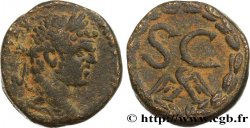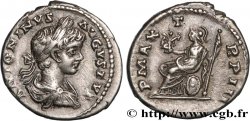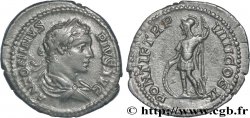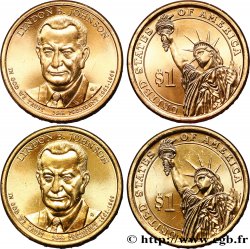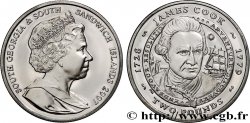v49_0630 - CARACALLA Octassaria, (GB, Æ 34)
MONNAIES 49 (2011)
Prezzo di inizio : 380.00 €
Valutazione : 650.00 €
Prezzo realizzato : 380.00 €
Numero di offerte : 1
Offerta maxima : 680.00 €
Prezzo di inizio : 380.00 €
Valutazione : 650.00 €
Prezzo realizzato : 380.00 €
Numero di offerte : 1
Offerta maxima : 680.00 €
Tipo : Octassaria, (GB, Æ 34)
Data: c. 200-209
Nome della officina / città: Carie, Mylassa
Metallo : rame
Diametro : 33,5 mm
Asse di coniazione : 6 h.
Peso : 16,60 g.
Grado di rarità : R2
Emission: 3e
Commenti sullo stato di conservazione:
Exemplaire sur un flan très large, parfaitement centré des deux côtés avec les grènetis visibles. Très beau portrait de Caracalla jeune. Très beau revers. Magnifique patine vert olive foncé, légèrement granuleuse
N° nelle opere di riferimento :
Diritto
Descrittivo diritto : Buste lauré, drapé et cuirassé de Caracalla Auguste à droite, vu de trois quarts en arrière (A*2).
Legenda diritto : AU K MAR - AU ANTWNINOS, (Autokraor Kaiasar Markos Aurelios Antwninos)
Traduzione diritto : (Lemepereur césar Marc Aurèle Antonin).
Rovescio
Descrittivo rovescio : Dieu fluvial (Kybersos) couché à gauche, nu jusqu’à la ceinture, tenant de la main droite deux épis et un pavot et de la main gauche, une corne d’abondance.
Legenda rovescio : MULA/SEWN
Traduzione rovescio : (des Mylassiens).
Commento
Flan de médaillon selon les appellations anciennes. Pour ce type, A. Akarca avait recensé seulement deux exemplaires en 1959 sans liaison de coin pertinente, mais signalait que l’exemplaire de la collection von Aulock était de même coin que l’exemplaire du British Museum (BMC. 34).
Medallion flan according to the old names. For this type, A. Akarca had recorded only two examples in 1959 without relevant die connection, but noted that the example in the von Aulock collection was of the same die as the example in the British Museum (BMC. 34)
Medallion flan according to the old names. For this type, A. Akarca had recorded only two examples in 1959 without relevant die connection, but noted that the example in the von Aulock collection was of the same die as the example in the British Museum (BMC. 34)







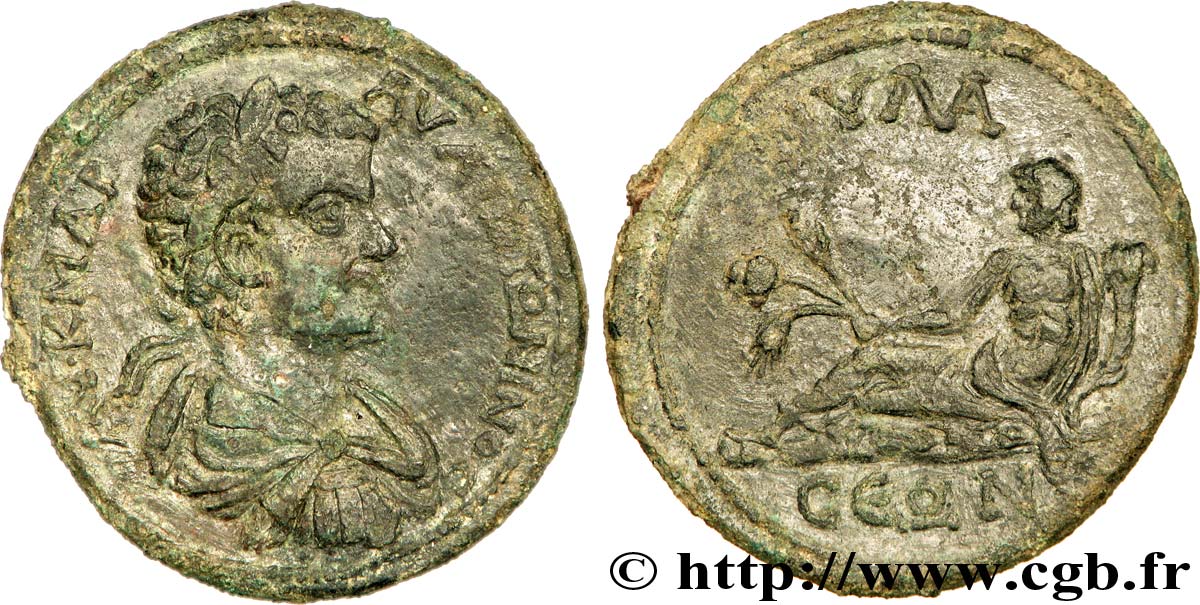
 Segnalare un errore
Segnalare un errore Stampate la pagina
Stampate la pagina Condividi mia selezione
Condividi mia selezione Fai una domanda
Fai una domanda Consegnare / vendere
Consegnare / vendere
 Descrittivo
Descrittivo
